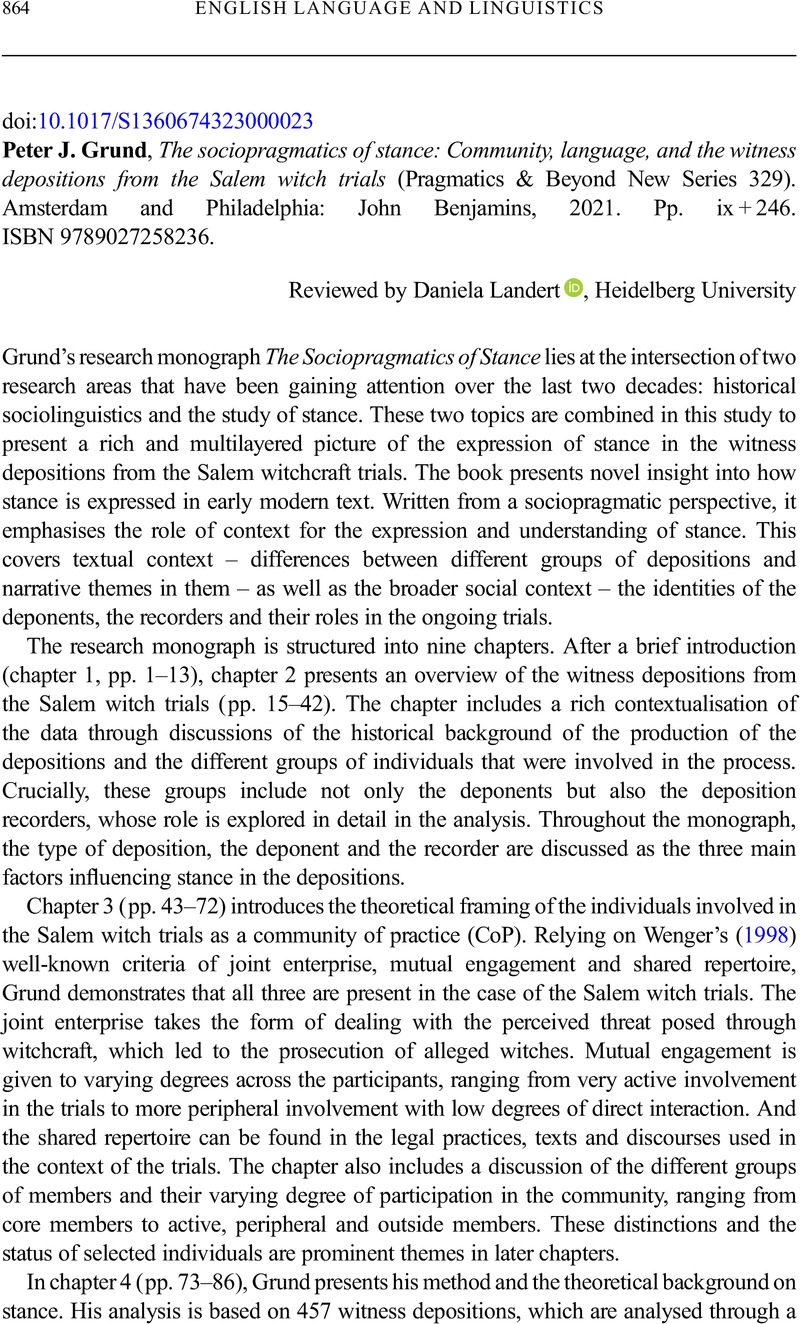No CrossRef data available.
Article contents
Peter J. Grund, The sociopragmatics of stance: Community, language, and the witness depositions from the Salem witch trials (Pragmatics & Beyond New Series 329). Amsterdam and Philadelphia: John Benjamins, 2021. Pp. ix + 246. ISBN 9789027258236.
Review products
Peter J. Grund, The sociopragmatics of stance: Community, language, and the witness depositions from the Salem witch trials (Pragmatics & Beyond New Series 329). Amsterdam and Philadelphia: John Benjamins, 2021. Pp. ix + 246. ISBN 9789027258236.
Published online by Cambridge University Press: 15 March 2023
Abstract
An abstract is not available for this content so a preview has been provided. Please use the Get access link above for information on how to access this content.

- Type
- Book Review
- Information
- Copyright
- Copyright © The Author(s), 2023. Published by Cambridge University Press
References
Wenger, Etienne. 1998. Communities of practice: Learning, meaning, and identity. Cambridge: Cambridge University Press.CrossRefGoogle Scholar



